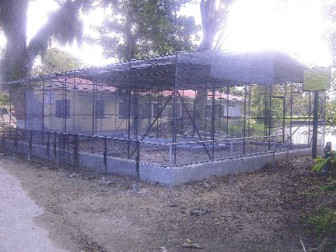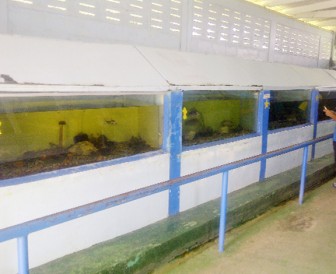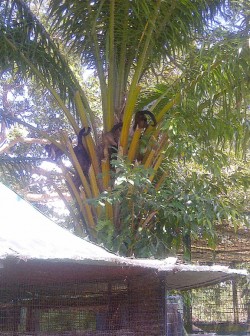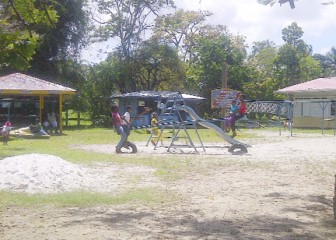The Georgetown Zoo, which many parents once visited with their children to see the animals from Guyana’s own rainforest, as well as more exotic species from outside, has been deteriorating for years with little action being taken to improve it.
Not only are the few animals which are still kept in the facility living under poor conditions, but the overall appearance of the facility is in need of rehabilitation, although there were notices indicating that some areas were under rehabilitation.
These days, the zoo houses mainly a number of caimans, monkeys, three cougars, macaws, parrots and some other bird species.
Questions raised about the animals and condition of the zoo in a letter from Nadia Ragnauth published in the February 14 edition of Stabroek News, went unanswered, even after this newspaper made several efforts to contact Head of the National Parks Commission, Yolanda Vasconcellos. On each occasion over a number of days, the official’s secretary indicated that she was unavailable and would return the call. However, this was never done.
The recent death of five deer was also a question this newspaper sought to have addressed, as a press release at the time had indicated that investigations were ongoing.

Since there was no response from the Head of the National Parks Commission, Stabroek News decided to visit the zoo and make its own observations.
From the visitor’s point of view not much seems to have been done to maintain the zoo and there are now fewer animals than there used to be living under worsening conditions.
With many empty cages, garbage has been left to pile up and has created quite a grimy image for persons who travel to see all that is advertised on the walls of the zoo‘s perimeter.
While some cages have had no face lifts, this newspaper did observe one new caging area being built, while others carried notices that exhibits had been temporarily closed for rehabilitation work.
Also observed were many monkeys in the trees. Whether or not they have escaped or whether they have been left there, this newspaper was unable to inquire. The animals were seen picking fruit and swinging in the trees.

What seems to have deteriorated the most over the years is the zoo’s aquarium, which is badly lit and reeking. There are several species of fish displayed in the dark water, and visitors cannot help but notice the dirty walls and ceiling, making this facility very uninviting. Several persons were seen approaching the entrance of the aquarium but turning back after having a look inside from the door.
Another concern which was raised by Ragnauth in her letter was the report of the Guyana Geology and Mines Commission move to purchase an elephant and whether or not the zoo’s administration would be able to house and care for such a large animal.

She made several suggestions, such as animals being moved from cages to “holding spaces” which would better reflect their natural habitat; bird seed and fruit being left to attract wild birds; flowering plants to invite hummingbirds and butterflies; and discouraging the isolation of animals.
“The message the zoo sends is that we don’t care for our animals, we don’t care for our environment, we don’t care for visitors, and we don’t care what anyone thinks,” Ragnauth wrote.
While the zoo itself is uninviting, the small playground in the facility is still patronised by

many children who enjoy the see-saws and swings.




